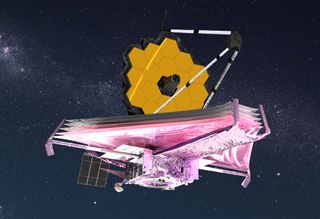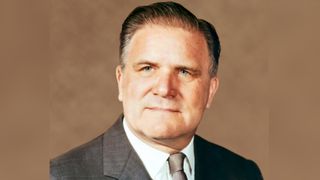NASA emails reveal internal discussions over calls to rename James Webb Space Telescope: report
The 1960s agency administrator's treatment of LGBTQ people has come under question.

New documents suggest that NASA officials dismissed concerns raised by the LGBTQ community over the name of its newest observatory, the James Webb Space Telescope.
NASA was aware that discrimination against LGBTQ people took place in the agency under the leadership of 1960s administrator James Webb when it refused to remove the man's name from its flagship mission, new documents obtained by Nature reveal.
In early 2021, a group of astronomers petitioned NASA to change the name of the space observatory of the century, the $10 billion James Webb Space Telescope, arguing that his actions contributed to the "Lavender Scare" targeting LGBTQ people in government at the time. NASA dismissed the request in September 2021, claiming it had no evidence to support the allegation, and never published a report into the investigation, according to Nature.
Related: How the James Webb Space Telescope works in pictures
The new documents, obtained under a freedom of information request, however, tell a different story. They show that NASA was aware of a 1969 court case filed by a former NASA employee who had been fired in 1963 because supervisors thought he was gay.
In addition, Nature found that available documents described such practices as customary in NASA during the 1960s, when James Webb was at the agency's helm.
Among the documents obtained by Nature were email exchanges between NASA officials and an external researcher from spring 2021, which discussed the 1969 court ruling, describing it as "troubling." The external researcher that in the ruling, which rejected an appeal of the fired employee named Clifford Norton, the judge noted that the manager who fired Norton had been told by NASA's personnel office at the time that it was a "custom within the agency" to fire people for "homosexual conduct," according to Nature.
Get the Space.com Newsletter
Breaking space news, the latest updates on rocket launches, skywatching events and more!
"I think you will find this paragraph to be troubling," the external researcher wrote to Eric Smith, the James Webb Space Telescope program scientist at NASA. "'A custom within the agency' sounds pretty bad," the researcher wrote, according to Nature.
The documents don't contain evidence that James Webb personally targeted LGBTQ people. However, astronomers opposing the name posit that he played a major role in setting the culture at the agency he presided over.
During his time at NASA, Webb oversaw the legendary Apollo program that landed humans on the moon, but also fostered the agency's focus on science. He died in 1992; 13 years later, NASA Administrator Sean O'Keefe decided to honor his predecessor by naming the biggest, most complex and most powerful space observatory to date after him.

The modern NASA, the one that built and launched the James Webb Space Telescope in December 2021, prides itself in its commitment to diversity, equity, inclusion and accessibility.
"NASA is entirely committed to the full participation and empowerment of a wide variety of people, organizations, capabilities, and assets because we know this best enables us to access everyone and everything we need to best accomplish our missions," the agency's policy states, according to Nature.
Follow Tereza Pultarova on Twitter @TerezaPultarova. Follow us on Twitter @Spacedotcom and on Facebook.
Join our Space Forums to keep talking space on the latest missions, night sky and more! And if you have a news tip, correction or comment, let us know at: community@space.com.

Tereza is a London-based science and technology journalist, aspiring fiction writer and amateur gymnast. Originally from Prague, the Czech Republic, she spent the first seven years of her career working as a reporter, script-writer and presenter for various TV programmes of the Czech Public Service Television. She later took a career break to pursue further education and added a Master's in Science from the International Space University, France, to her Bachelor's in Journalism and Master's in Cultural Anthropology from Prague's Charles University. She worked as a reporter at the Engineering and Technology magazine, freelanced for a range of publications including Live Science, Space.com, Professional Engineering, Via Satellite and Space News and served as a maternity cover science editor at the European Space Agency.
